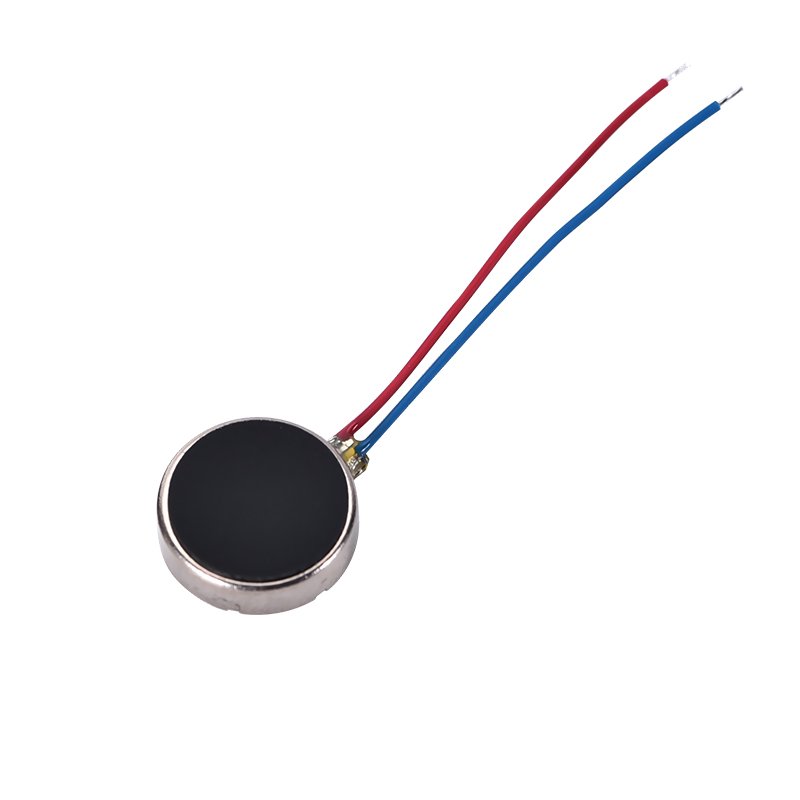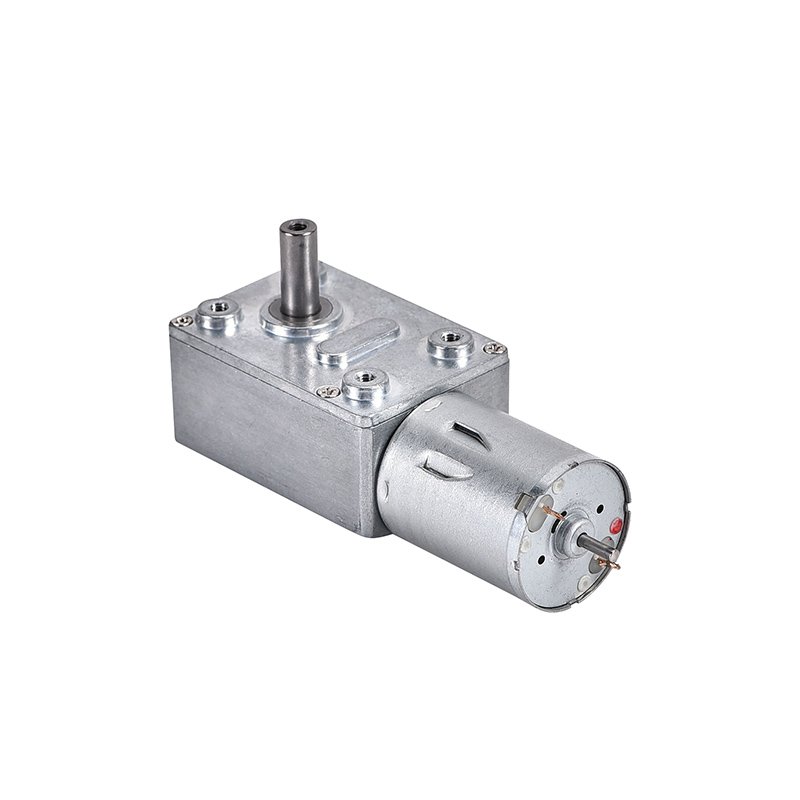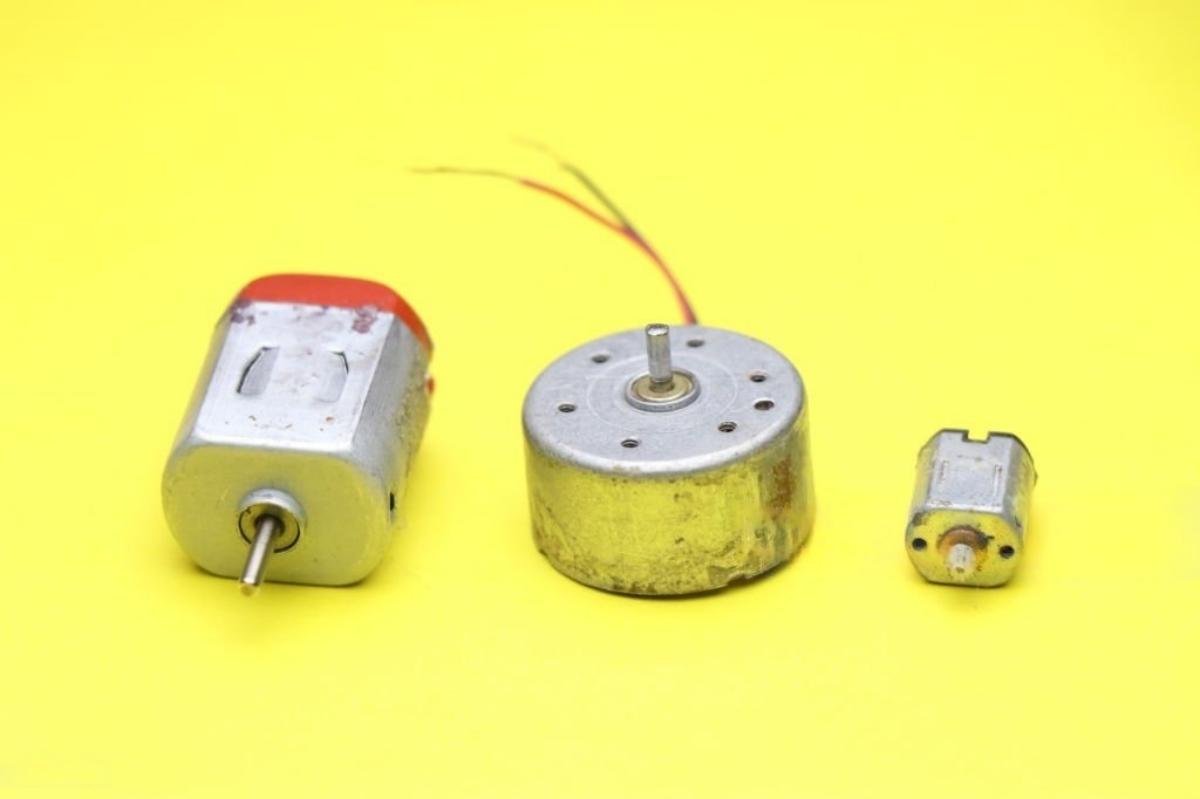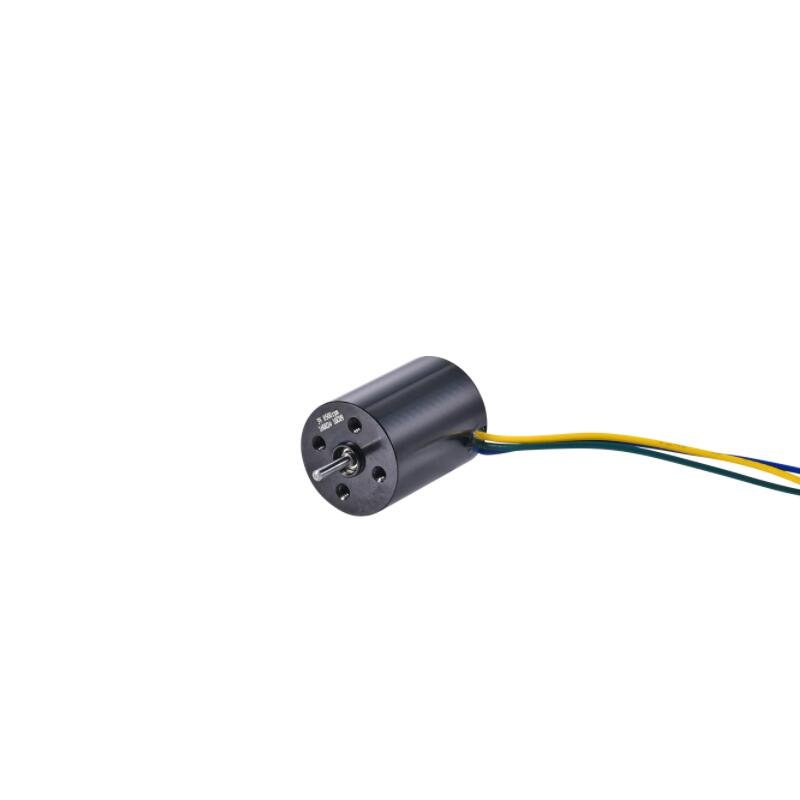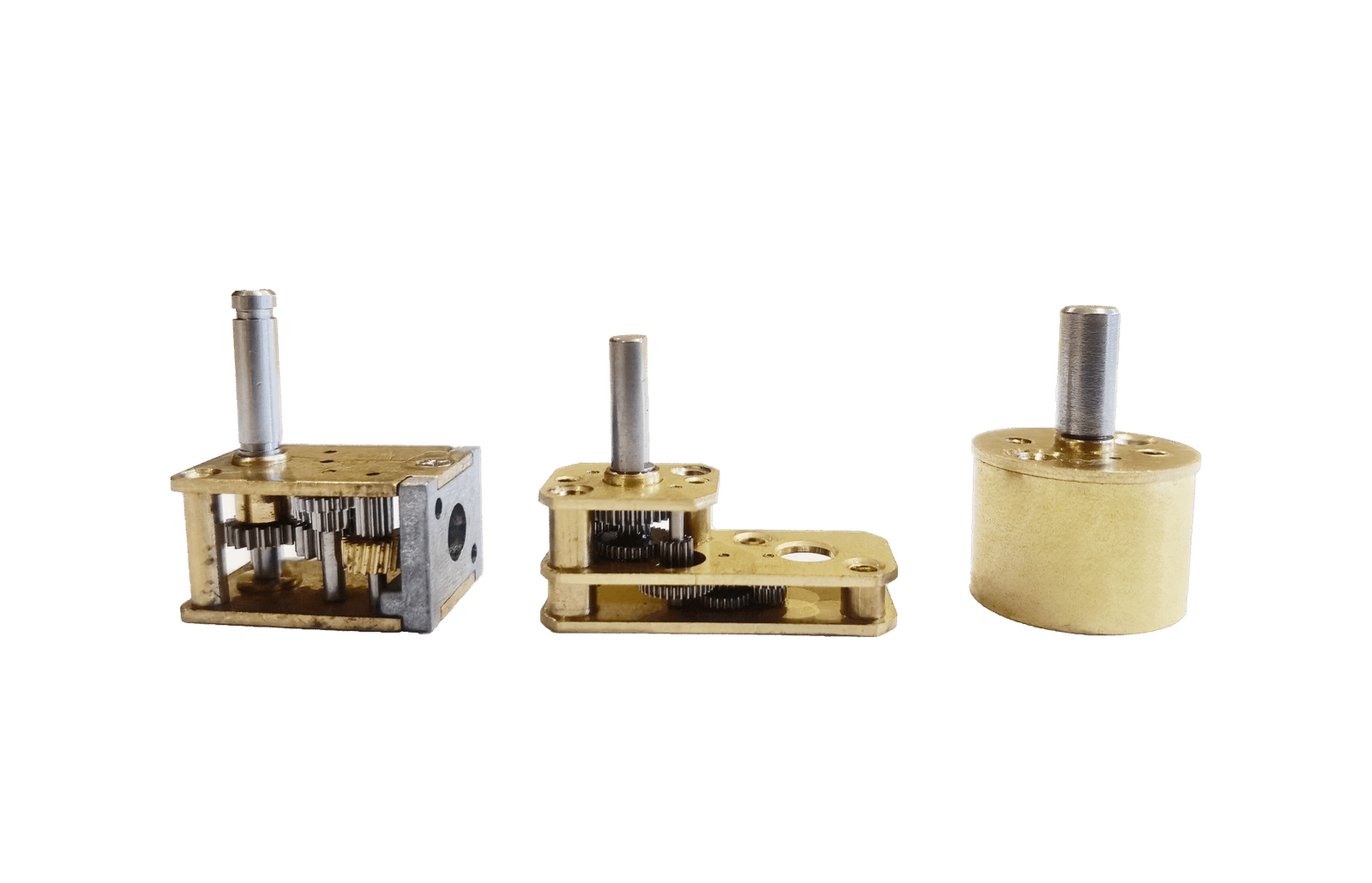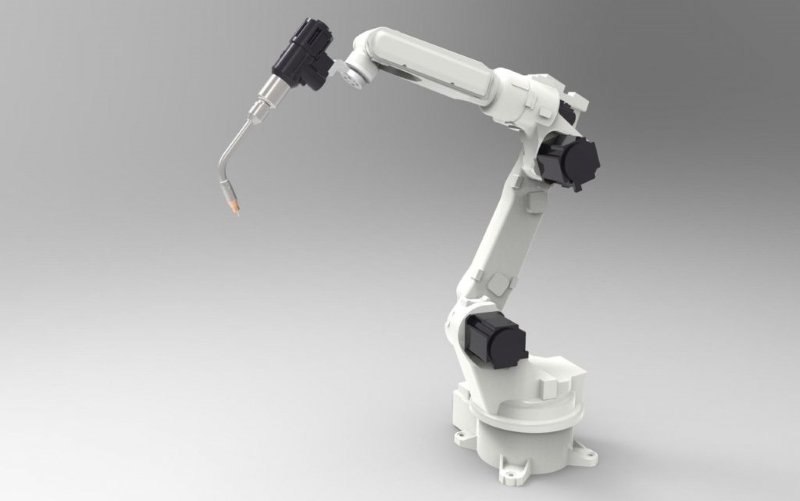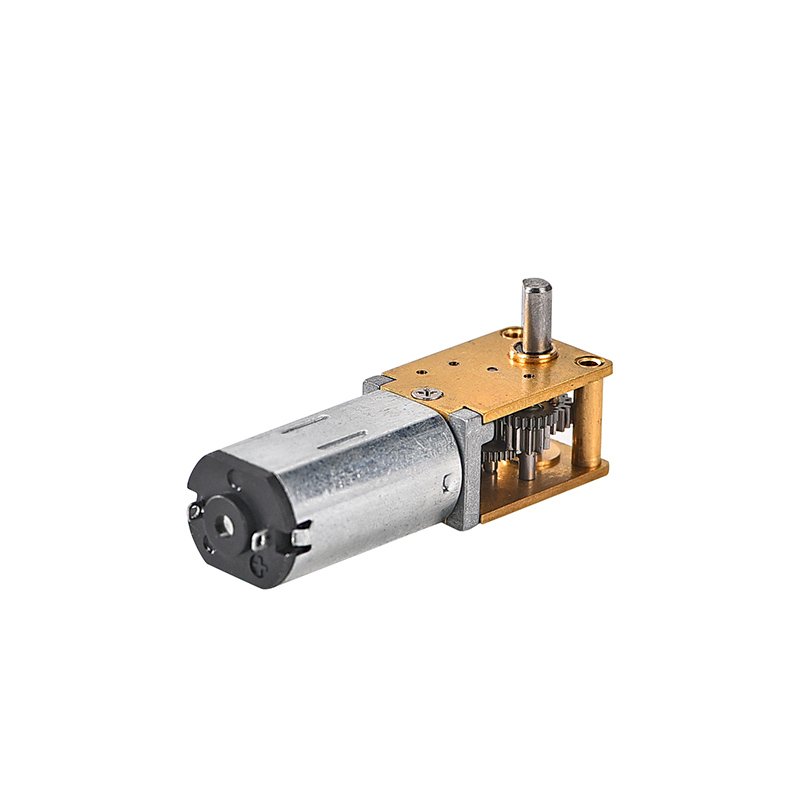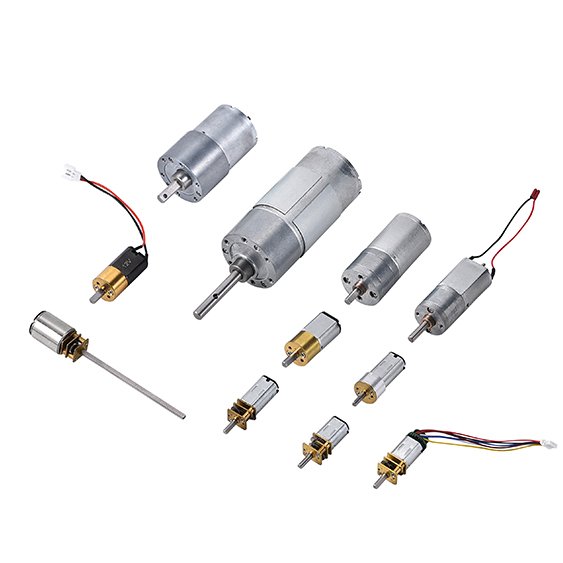When you look at brushless motor vs brushed, you see clear reasons to pick one. Brushless motors work for a much longer time. They usually last over 10,000 hours. Brushed motors often stop after 2,000 to 5,000 hours. You spend less time and money fixing brushless motors. This is because they have fewer parts that break. Here are the differences:
Metric | Brushless Motors | Brushed Motors |
|---|---|---|
Average Lifespan | 10,000–20,000+ hours | 2,000–5,000 hours |
Maintenance Frequency | Minimal | Frequent |
Long-Term Value | High | Lower |
Think about your budget. Think about how much fixing you want to do. Think about how long you need the motor to work. This will help you choose between brushless motor vs brushed.
Key Takeaways
Brushless motors work for a much longer time than brushed motors. They can run for over 10,000 hours and need very little care. Brushed motors need their brushes changed often. They also need to be cleaned a lot. This means more time when they cannot be used and higher repair bills. Brushless motors are quieter and do not get as hot. They also use less energy and save money over time. Brushless motors cost more at first. But they save money later because they do not need as much fixing or replacing. Picking brushless motors makes machines work better and break less. This is great for things that are used a lot or need to work really well.
Motor Types
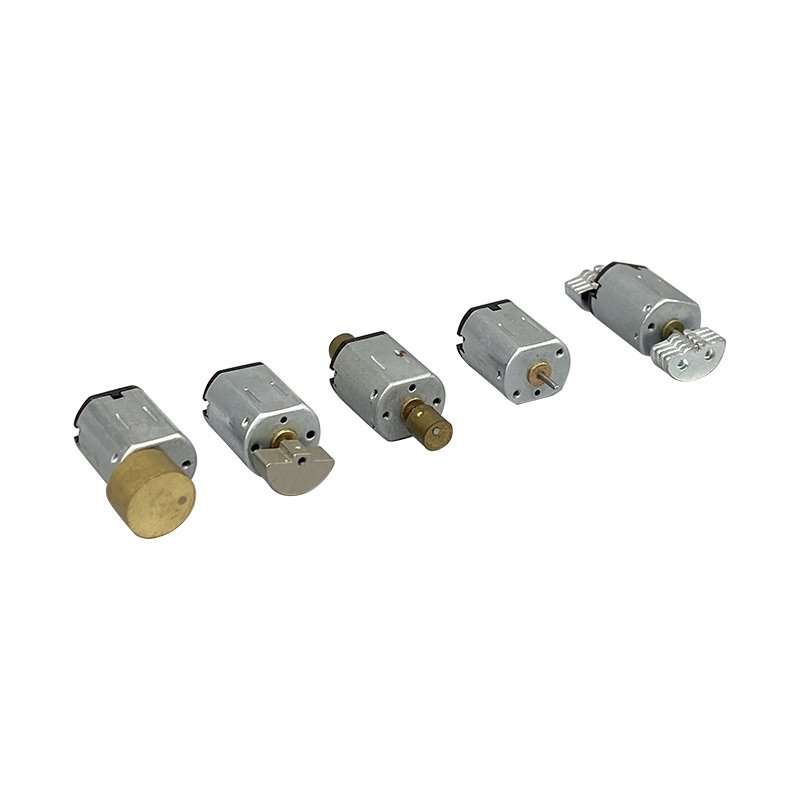
Brushed Motors
Brushed motors are found in toys and simple machines. These motors have a stator with permanent magnets. The rotor spins inside the stator. Brushes touch the commutator to send electricity. This makes the rotor turn by switching the current. The brushes and commutator wear out over time. You need to change the brushes often. This setup causes friction, heat, and noise. Brushed motors are cheaper and good for easy jobs. They do not last as long as other motors.
Brushless Motors
Brushless motors work in a different way. The stator has coils that do not move. The rotor has permanent magnets and spins. There are no brushes or commutator in these motors. Electronic controllers and sensors switch the current. This is called electronic commutation. Brushless motors have fewer moving parts. They last much longer than brushed motors. They make less noise and less heat. You can control speed and torque better. People use brushless motors for jobs that need high performance. General-purpose bldc motors are used in drones, electric bikes, and power tools. These motors are very efficient and need little care.
Key Differences
Brushed motors and brushless motors work in different ways. They also last for different amounts of time. The way each motor switches current is important. Brushed motors use brushes and a commutator. Brushless motors use electronic controllers and sensors. Brushed motors have more moving parts. Brushless motors have fewer moving parts and no brushes.
Aspect | Brushed Motors | Brushless Motors |
|---|---|---|
Commutation Method | Mechanical (brushes and commutator) | Electronic (controller and sensors) |
Moving Parts | Brushes and commutator | Fewer moving parts, no brushes |
Lifespan | Shorter, needs frequent maintenance | Longer, needs little maintenance |
Efficiency | Lower, more heat and noise | Higher, less heat and noise |
Control | Basic speed and torque control | Precise speed and torque control |
Brushless motors last longer and work better because of their design. They do not have parts that wear out fast. The electronic controller switches the current without touching anything. This makes general-purpose bldc motors reliable and efficient. These motors run quietly and stay cool. They work for many years. If you want a motor that lasts long and needs little care, general-purpose bldc motors are a good pick. Many industries use brushless motors instead of brushed motors now.
Brushless motor vs brushed: Lifespan
Brushed Motor Lifespan
Brushed motors do not last as long as other types. The main reason is that the brushes wear out. Inside a brushed motor, brushes push on a spinning commutator. This makes friction and heat. Over time, the brushes get used up and need to be changed. Most brushed motors work for 1,000 to 3,000 hours before the brushes wear out. Some can last up to 5,000 hours if you use them gently and keep them clean. If you use heavy loads or work in dirty places, the brushes wear out faster.
Tip: If you hear odd sounds or see sparks, check or change the brushes.
Here is a table that shows how different loads change brush life:
Load Type | Current Density (amps/in²) | Brush Life (hours) |
|---|---|---|
Intermittent, light | up to 30 | 750 – 2,000 |
Within rated load | 45 to 85 | 3,000 – 7,500 |
Intermittent, heavy | up to 125 | 1,000 – 4,000 |
You need to change brushes and clean the commutator often. If you skip this, the motor can break early. This is why how long a brushed motor lasts depends on how you use and care for it.
Brushless Motor Lifespan
Brushless motors last much longer than brushed motors. They do not have brushes rubbing on anything, so there is less friction and heat. Most brushless motors run for 10,000 to 20,000 hours or more. Some really good ones can reach up to 50,000 hours if you take care of them. The main parts that wear out are the bearings. If you check and oil the bearings, the motor can work for many years.
Note: Brushless motors use electronic controllers to switch the current. This design removes the main cause of wear in brushed motors.
Here is a quick comparison:
Motor Type | Average Lifespan (hours) | Maintenance Frequency | Notes on Wear and Reliability |
|---|---|---|---|
Brushed DC Motor | 1,000 – 3,000 | Brushes need replacement every 1,000-3,000 hours | Brushes and commutators wear due to physical contact, limiting lifespan and increasing downtime |
Brushless DC Motor | Often exceeds 10,000 | Much less frequent maintenance required | No brushes, resulting in 2-3 times longer lifespan and higher reliability, suitable for harsh industrial conditions |
You can see that brushless motors need less care and last much longer. This makes them a better pick if you want a motor that lasts a long time and is strong.
Factors Affecting Lifespan
You can help your motor last longer by doing good maintenance. Here are some important things that affect how long both motor types last:
Check and change brushes in brushed motors to stop commutator damage.
Clean the motor to get rid of dust and dirt that can cause problems.
Oil the bearings to lower friction and stop overheating.
Keep the motor working at its rated load to avoid extra stress.
Make sure the motor has good airflow to stay cool.
Use good parts and follow the maker’s instructions.
For brushless motors, check the bearings and keep the controller cool and clean.
Bearings are very important for how long brushless motors last. You should check them every 3 to 6 months. Use the right oil and do not use too much. Good bearings can last up to 50,000 hours if you care for them. Checking for vibrations helps you find problems early.
Remember: How you use and care for your motor changes its battery lifespan and how long it works.
When you compare brushless motor vs brushed, brushless motors win for lifespan. They do not have brushes that wear out. They need less care. They last much longer, even in hard jobs. If you want a motor that gives you the best value over time, brushless motors are the smart choice.
Brushless motors: Maintenance
Brushed Motor Maintenance
You have to take care of a brushed motor often. The brushes and commutator touch each other and wear out. This rubbing makes heat and dust. If you ignore it, the motor can get damaged. You should check and clean the motor to keep it working well. Here are some steps you should follow:
Look at the brushes and commutator every month or few months.
Use a vacuum and soft brush to clean out dust and dirt.
Wipe off oily dirt with a solvent, but do not use too much.
Only oil the bearings when needed; too much oil is bad.
Listen for strange sounds, feel for heat, or notice shaking.
Change brushes and bearings if you see they are worn or broken.
Doing these things helps stop the motor from breaking down. If you skip these checks, the motor can get too hot or lose power. You will spend more time fixing the motor and less time using it.
Brushless Motor Maintenance
Brushless motors do not need much care. You do not have to worry about brushes or commutators. The main thing to check is the bearings. These motors use electronic controllers, so there is less wear inside. You just need to look at the bearings and keep the motor clean. This makes brushless motors a good pick for people who want less work and fewer problems.
Aspect | Brushed Motors | Brushless Motors |
|---|---|---|
Maintenance Focus | Brushes and commutators need regular care | Bearings need occasional checks |
Maintenance Frequency | High | Low |
Downtime | Frequent repairs | Rare interruptions |
Cost | Higher over time | Lower over time |
Brushless motors save you money and time. You do not have to change brushes or fix commutators. The simple design means fewer things can go wrong and the motor lasts longer.
Common Issues
Brushed motors often have problems like worn brushes, getting too hot, and copper dust. These problems come from rubbing and not cleaning enough. You might see sparks, smell burning, or lose power. You need to fix these problems fast to stop bigger damage.
Brushless motors do not have most of these problems. You only need to watch for bearing wear or rare electronic issues. Because they need less care and last longer, brushless motors are better for most jobs.
Tip: Pick brushless motors if you want less work and lower costs. Their design makes them work well and saves you money over time.
Value
Cost Comparison
When you look at brushless motor vs brushed, you notice big cost differences over time. You pay less at first for a brushed motor. For example, a 500W brushed motor costs about $50. A similar brushless motor costs between $75 and $100. The higher price is because of the electronic controller and the design.
But you should think about the whole cost. Brushed motors need fixing every 500 to 1,000 hours. Each time you fix it, it can cost $30 to $50. You may need to buy a new motor after three years. Brushless motors last much longer, sometimes up to 10 years or more. They need less fixing, so you save money on repairs and buying new motors. Over ten years, you can save over $1,000 with a brushless motor. You also have less downtime and less waste.
Here is a table to show the cost differences:
Aspect | Brushed Motors | Brushless Motors |
|---|---|---|
Initial Cost | $50 (500W) | $75–$100 (500W) |
Maintenance Interval | 500–1,000 hours | 10,000–50,000 hours |
Maintenance Cost per Service | $30–$50 | 40% lower annual cost |
Lifespan | 1,000–5,000 hours | 10,000–50,000 hours |
Motor Replacement Frequency | Every 3 years | Every 8–10 years |
Total Cost Reduction (10 yrs) | N/A | ~30% lower total cost |
Replacement Cost Savings | N/A | Over $1,000 saved |
Operational Waste Reduction | N/A | ~90% reduction |
You can see that owning brushless motors costs much less over time. You spend less money fixing, replacing, and waiting for repairs.
Tip: If you want to save money over many years, pick a brushless motor for your project.
Feature Table
You should also check the features that make these motors different. This table shows the main things and how they change your experience:
Feature | Brushed Motors | Brushless Motors |
|---|---|---|
Construction | Uses brushes and commutator | Uses electronic controller, no brushes |
Commutation Method | Mechanical | Electronic |
Efficiency | Lower (70–75%) | Higher (85–90%) |
Lifespan | Shorter, brushes wear out | Longer, fewer parts to wear |
Noise Generation | Noisy, sparks and friction | Quiet, less vibration |
Size | Bulkier | More compact, controller needed |
Speed Capabilities | Limited by brushes | Higher speed and torque |
Maintenance | Frequent brush replacement | Minimal, mostly bearings |
Cost | Lower upfront | Higher upfront, lower over time |
This table helps you see why brushless motors give you better efficiency, longer life, and less noise.
Brushless DC Motors: Efficiency
Brushless dc motors are known for better efficiency. They turn up to 90% of electricity into movement. Brushed motors only reach about 75% to 80%. This means brushless motors waste less energy as heat. You get more power for the same electricity. This helps battery lifespan if you use electric bike motors or other battery-powered things.
Here is a quick look at efficiency:
Motor Type | Typical Efficiency Range | Why the Difference? | Impact on Energy Use |
|---|---|---|---|
Brushed DC Motors | 75–80% | Brushes cause friction and heat loss | More energy wasted, less power |
Brushless DC Motors | 85–90% | No brushes, less friction, precise control | Less energy wasted, more power |
Note: Better efficiency means lower energy bills and less heat. Your motor stays cooler and lasts longer.
You also get other good things with brushless motors:
Less fixing needed
Less downtime
Quieter running
High torque-to-weight ratio for better performance
Regenerative braking in some models, which saves energy
These features make brushless motors a smart pick for high-performance drive systems and for anyone who wants to spend less money over time.
Use Cases
You need to pick the right motor for your job. Here are some common uses for each type:
Brushed Motors:
Toys and simple machines
Cheap tools
Jobs where noise and fixing do not matter
Projects with a small budget
Brushless Motors:
Electric bike motors and scooters
Drones and RC vehicles
Home appliances like fans, air conditioners, and refrigerators
Power tools that need high performance
Robots and industrial machines needing better efficiency and control
Car uses like electric steering, seat fans, and parking brakes
Brushless motors are best when you want durability, better efficiency, and less fixing. They help cut down waste and support green goals. You get a longer life and fewer repairs. This matters for electric bike motors, where battery lifespan and reliability are important.
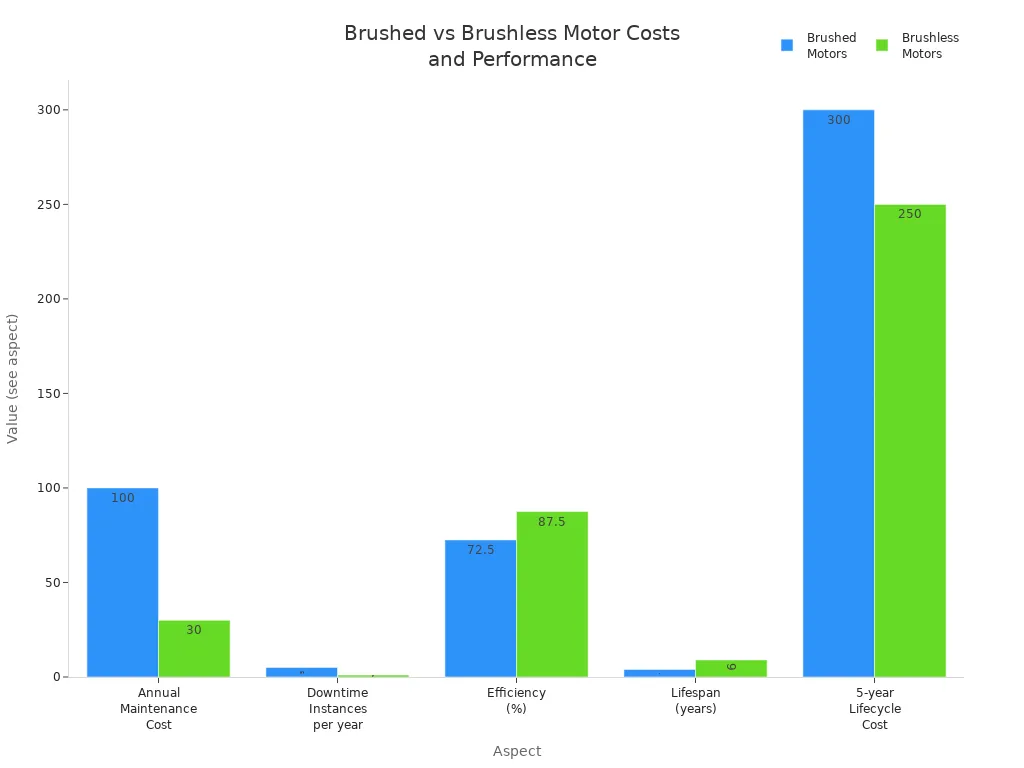
If you want a motor that lasts, saves money, and gives you better efficiency, brushless motors are the best pick for most modern jobs.
You should always think about motor trade-offs. Brushed motors are simple and cheap, but you pay more later. Brushless motors cost more at first, but you get better efficiency, less noise, and a longer life. You also spend less money owning them and get more reliable performance.
You should choose a brushless motor if you want the best lifespan, less maintenance, and higher long-term value. Experts and studies show that brushless motors last longer and need fewer repairs because they have no brushes to wear out. If you want to save money over time and avoid frequent fixes, this type is the better choice. Always match your motor to your needs by thinking about your budget, how much maintenance you want to do, and what your project requires.
FAQ
Why do brushless motors last longer than brushed motors?
Brushless motors last longer because they have no brushes that wear out. You avoid friction and heat from moving parts. This design reduces breakdowns and keeps your motor running for many years.
Why should you choose a brushless motor for high-use applications?
You should pick a brushless motor for high-use jobs because it needs less maintenance. You save time and money on repairs. The motor stays reliable even when you use it every day.
Why do brushless motors cost more at first?
Brushless motors cost more at first because they use advanced electronics and better materials. You pay more up front, but you save money over time with fewer repairs and longer life.
Why do brushless motors run more quietly?
Brushless motors run quietly because they have fewer moving parts. You do not hear brush friction or sparks. This makes them a good choice for places where you want less noise.
Why do you need less maintenance with brushless motors?
You need less maintenance with brushless motors because there are no brushes to replace. You only check the bearings sometimes. This simple care keeps your motor working well.
